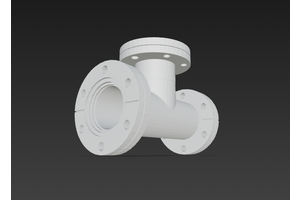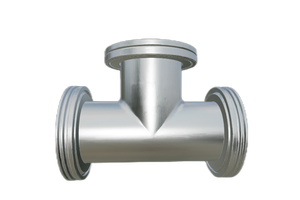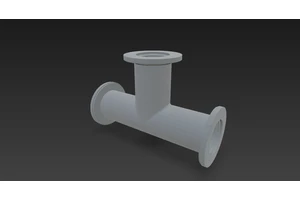-
Future Potential Applications of Vacuum Technology
Vacuum technology has long been a cornerstone of industries such as semiconductor manufacturing, aerospace, and scientific research. As global industries demand cleaner, more precise, and more sustainable processes, the scope offuture applications of vacuum technologycontinues to expand. Looking ahead, several fields are expected to benefit from advanced vacuum systems.1. Next-Generation Semiconductor ManufacturingOne of the most importantfuture applications of vacuum technologylies insemiconductor manufacturing. With the move toward smaller nanometer nodes and advanced packaging, processes like extreme ultraviolet (EUV) lithography and atomic layer deposition (ALD) requirevacuum technology in semiconductorsto maintain ultra-clean environments. This ensures higher yields, reduced contamination, and reliable chip performance.2. Space Exploration and Aerospace EngineeringThe role ofvacuum systems in aerospaceis becoming increasingly important. As human space exploration grows, vacuum cha
View -
The Relationship Between Gas Pressure and Vacuum Level
In vacuum technology, understanding the relationship between gas pressure and vacuum level is essential. Whether it is in semiconductor manufacturing, laboratory research, or industrial applications, pressure and vacuum are two sides of the same coin. The deeper the vacuum, the lower the gas pressure inside the chamber. Let’s explore how these two concepts connect.1. Defining Gas PressureGas pressure refers to the force exerted by gas molecules when they collide with the walls of a container. At atmospheric conditions, air pressure at sea level is about 1013 mbar (or 760 Torr). As the number of gas molecules decreases, pressure drops. This reduction in gas density forms the foundation of vacuum technology.2. What Vacuum Level Really MeansVacuum level describes how much the pressure inside a system is reduced compared to the normal atmosphere. A “high vacuum” means very few gas molecules remain inside the chamber. For example, a low vacuum might still have pressures around a few milliba
View -
Latest Vacuum Technologies in Semiconductor Manufacturing
Vacuum technology plays a critical role in semiconductor manufacturing, as it provides the clean and controlled environment necessary for processes like deposition, etching, and lithography. With the continuous push for smaller, faster, and more energy-efficient chips, vacuum systems are evolving to meet higher demands in precision, efficiency, and reliability. Below are some of the latest developments in vacuum technology for semiconductor manufacturing.1. Advanced Dry Vacuum PumpsTraditional oil-sealed pumps are no longer suitable for modern fabs, where contamination must be avoided at all costs. Today, dry vacuum pumps with improved thermal control, corrosion resistance, and energy efficiency are widely used. These pumps can handle harsh process gases generated during etching and deposition, while also reducing downtime and maintenance costs.2. Ultra-High Vacuum (UHV) SystemsAs semiconductor nodes shrink below 5nm, achieving ultra-clean environments becomes essential. UHV technology
View -
The Concept and Classification of Vacuum Technology
Concept of Vacuum TechnologyVacuum technology refers to the science and engineering methods used to create, measure, and maintain environments with air pressure lower than the atmosphere. In such conditions, the number of gas molecules is greatly reduced, which allows processes and experiments that cannot be performed under normal pressure. Vacuum technology is essential in many modern industries, including electronics, aerospace, materials science, medical devices, and scientific research.Classification of Vacuum TechnologyVacuum technology is commonly classified according to the pressure range and the methods used to achieve it. The main categories include:Low Vacuum TechnologyPressure slightly lower than atmospheric pressure.Often achieved with simple pumps.Applications: food packaging, vacuum molding, basic drying processes.Medium Vacuum TechnologyReaches pressures much lower than low vacuum.Requires more advanced pumps such as rotary pumps or mechanical boosters.Applications: coat
View -
Applications of Vacuum Technology in the Aerospace Industry
Vacuum science and aerospace technology are closely interconnected, with one of the most critical links beingspace environment simulation. All types of spacecraft — including launch vehicles, artificial satellites, manned spacecraft, space stations, space probes, and space shuttles — operate in the natural vacuum of outer space.1. The Space Environment and Its Impact on SpacecraftDuring spaceflight, spacecraft are exposed not only to the vacuum of space but also to solar radiation, high-energy charged particles, and extreme temperature variations. These environmental factors can:Alter or degrade the performance of materials.Reduce the sensitivity and accuracy of instruments.Cause operational malfunctions.Endanger astronaut safety in manned missions.To prevent such risks, it is essential to conductground-based space environment simulation testsbefore launch. These tests allow engineers to understand how spacecraft perform in actual space conditions, detect potential issues, and implemen
View -
Applications of Vacuum Technology in Accelerators and Controlled Nuclear Fusion
Vacuum technology plays a vital role in both particle accelerators and controlled nuclear fusion systems, ensuring the stability, efficiency, and safety of these advanced scientific devices.1. Vacuum in Particle AcceleratorsA particle accelerator is a device designed to accelerate particles to extremely high energies. These particles — such as electrons, protons, deuterons, alpha particles, and other heavy ions — are used in fundamental research as well as in medical, industrial, agricultural, and food-processing applications.Through interactions between accelerated particles and matter, accelerators can also produce a wide range of secondary charged and neutral particles, including gamma rays, neutrons, mesons, hyperons, and antiparticles.To ensure the particles travel in a straight path without scattering due to collisions with residual gas molecules, the accelerator chamber must maintain an extremely high vacuum. If the vacuum level is insufficient, the following problems may occur:
View
Vacuum Technology




